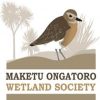
Greetings and welcome to our May newsletter!
Despite the challenging weather conditions with Cyclone Gabriel and the recent heavy rain we have experienced within the region, the MOWS team have been hard at work continuing in our restoration efforts, coordinating working bees, and delivering our very successful educational program. We’re excited to share all the latest updates and news with you, so keep reading to discover what we’ve been up to.
Message from the Chair
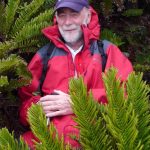
In our last newsletter we noted that the weather had been unseasonably damp – we did not know what lay in store for us. We had the wettest start to the year that I have experienced, over 500mm in the first two months, with 18 wet days in January! This was followed by an unusually dry March and April and then May, well what can I say, so far as of May 12 th , we have 115% of the rainfall we had in March and April – and every day until today has been wet, and windy, and cloudy! Unsurprisingly field work has been very tricky and we are unsurprisingly, significantly behind in some areas.
On a different front, Exco and the Committee have been looking to the future to plan the way forward and work out what facilities and equipment we will be needing. I have been Chair since 25 th April 2009, I think it is to ime for me to step down and I have agreed to do so at the AGM in November. We are also trying to work out how to develop, or otherwise our ‘Gear Shed facility on Wilson Road North. our lease gives TALT the right to terminate the arrangement in n2025, so our first step is t check that they are happy for us to stay on for the rest of the 30 year lease. We are currently awaiting a response but if as we hope, it is positive, then we think we need to increase our office and storage capacity. Currently a mower, a punt and other items are stored at my place, which is not a long-term plan. So watch this space for news.
Welcome back Jenn!
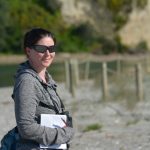
It with great pleasure that we welcome Jenn, back on board after her brief period of maternity leave. Jenn resumes her position as MOWS Operations Manager, bringing her passion and commitment for ecology and biodiversity to the role. As part of her responsibilities, she will manage the team of field workers, oversee reporting and funding, and ensure that the MOWS operation runs as smoothly and efficiently as possible. All this while also taking care of her wonderful whanau that now includes her beautiful baby boy Bodie.
MOWS Education Programme
The 2023 MOWS education programme kicked off in February with the participation of students from our six core schools, Te Puke High School, Te Puke Intermediate, Rangiuru Primary School, Te Puke Primary School, Maketu Kura and Paengaroa School.
Thanks to additional funding from TECT and Bay Trust, we had the opportunity to extend this fantastic programme to two additional schools in the area. We are delighted to be able to continue to support Otamarakau School and Pukehina School on the MOWS education programme. As our programme continues to gain in popularity, we anticipate welcoming more schools onboard in the near future.
Exploring our Estuaries
The MOWS facilitators participated in in-class sessions with each school, offering an overview of the Estuary unit and conducting some brief activities to encourage students to ponder why our estuaries are so crucial, the effects and impacts of specific activities on them, and what steps we can take as a community to improve their health.
On the field trip, students learned about the health of our local estuaries by exploring the amazing creatures within them and discovering the numerous problems and issues that they face today.
One of the exciting activities within this unit was to use their senses of smell, sight, sound, taste, and touch to make comparisons between Little Waihi estuary and Maketu estuary. This helped the students gain a deeper understanding of the unique characteristics and differences between the two estuaries.
They also volunteered to conduct a kaimoana survey on behalf of the Maketu Taiapure. Many thanks to the hundreds of students who completed this survey on behalf of the Maketu Taiapure.
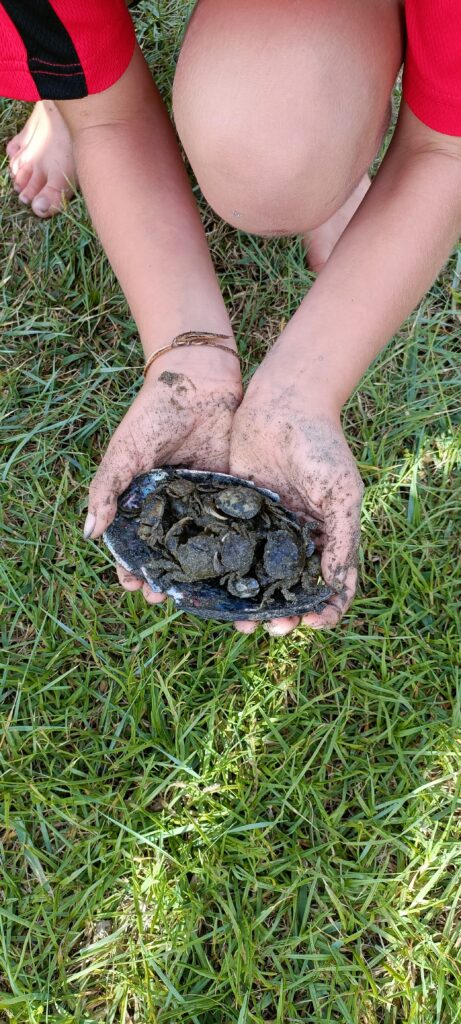
Crabs, lots and lots of crabs!
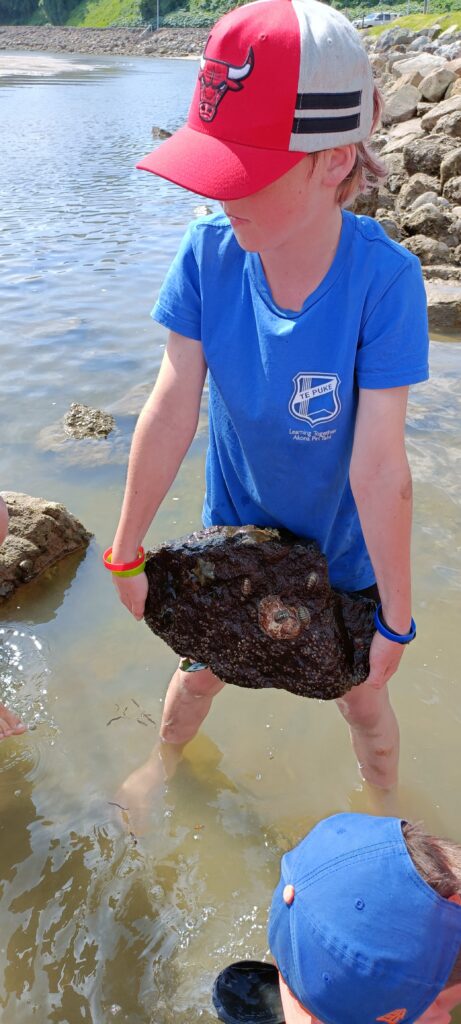
Chitons under a rock

Te Puke Primary School exploring the at Little Waihi estuary.
Term Two
This term, our students will have the opportunity to learn about climate change and the impact that this is having on our planet.
We hope that this knowledge will inspire them to take action and become responsible stewards of the environment.
Work Crew Update
In this latest work crew update we bring you some noteworthy highlights from the ongoing efforts of the MOWS team.
Pest Plant Control
Non-native grasses such as kikuyu, sea couch, paspalum, and wire-grass pose a significant threat to our dune systems by potentially outcompeting our native species such as spinifex and pingao. Displacement of native plants can have detrimental effects on biodiversity and result in altered habitats. Despite recent weather conditions hindering the team’s pest plant control (PPC) efforts, they continue to undertake this mahi across all our sites wherever possible. Weeds such as dimorphotheca, parsnips, watermelon, fathen, senecio, and lupins are an issue on the coast and are hand-pulled regularly by the team. This approach is aimed at preserving a healthy and diverse ecosystem by minimizing the use of sprays and the negative impacts of these invasive plants.
Indian doab has been identified as a serious concern at Maketu Spit particularly nearest the carpark. We are currently in discussions with Coastcare and the Regional Council to determine the most effective solution to tackle this problem
In addition to the invasive weed challenge, we must also address the inadvertent disposal of green waste in our dunes. We have noticed that some coastal properties unknowingly contribute to these problems by discarding their weeds in these sensitive areas. We kindly remind all community members to dispose of their green waste responsibly at designated transfer stations. By doing so, we can collectively reduce the risks posed to our coastal environment and promote a cleaner, more sustainable future for everyone to enjoy.
Animal Pest Control
The MOWS team undertakes ongoing predator control at all sites regularly checking and servicing over 200 traps in the Maketu and Pukehina area. This includes over 160 DOC200 stoat and rat traps, 10 AT220 possum traps and soon to be a fleet of live capture cat traps.
Due to this extensive trapping programme, the Department of Conservation has recognized our area as a hot spot for bittern breeding. As a result, efforts to enhance bittern protection in the area are being intensified. Waewaetutuki adjacent to the Waihi West Wildlife Reserve on to the Wharere Canal is now included as part of our trapping network.
Tracking cards and bait stations were deployed at Papahikahawai, Ford Island and Te Pa Ika in March then again in May in order to control rodent populations in the area. Rodents have the potential to disrupt the delicate balance of these ecosystems. They can outcompete native species for resources, prey on small animals, and destroy our native vegetation. Suppressive control of rodents is essential for maintaining ecological balance, conserving endangered species, and minimizing damage to land.
Trapping records for period 1 Jan 2023 – 30 May 2023 as follows: Ferret (2), rat (150), hedgehog (19), possum (5), Mouse (30), Rabbit (2) Other (3) Weasel (2).
Te Huauri o te Kawa
In the last newsletter, we reported the new track as ‘finished’ but that was not quite true. We actually finished laying the rock and scalping’s in April, deferred in large by the awful weather and the fact that the central section floods at high tide, so work can only be done when there is a low tide in the morning. We still need to do a final smoothing of the surface, hopefully before this newsletter is published but not looking likely. When finished this should be the first wheelchair accessible wetland track in the BoP!
Monitoring
Dotterel and gull surveys were undertaken between September 2022 and January 2023 at Maketu Spit, Newdicks Beach and Dotterel Point. A brief report on the numbers can be seen below.
In September, the breeding area at Dotterel Point experienced a peak population of 24 Dotterel (NZD), indicating the presence of approximately 12 NZD pairs. In January, a single chick was officially recorded during a survey, however we are unsure if this chick fledged successfully. The number of Variable Oystercatchers was notably high, with 103 individuals documented in November. Additionally, it is a pleasure to report the sighting of a Shore Plover on November 5th, 2022. This sighting can be confirmed by several eBirders who also observed a shore plover at Dotterel Point during that time. Shore plovers, also known as “Tuturuatu,” are small shorebirds exclusive to New Zealand. They are endemic to the Chatham Islands, where only 250 individuals are found, as well as a few predator-free islands near mainland New Zealand. It is for this reason we are super lucky to have this guy visit our shores. We sure hope to see more shore plovers here in the future.
Maketu Spit demonstrates its significance as a primary breeding ground for red-billed gulls, as evidenced by the survey conducted in September, which recorded approximately 3800 gulls. Despite the notable nesting attempts of 63 black-billed gulls on the spit, there is no recorded evidence of any successfully hatched or fledged chicks. Dotterel numbers appear to be down with only 18 recorded during peak season and while a solitary chick hatched, its fledging remains uncertain. Within the breeding area, the team observed 11 black-backed gulls attempting to nest. As a means of controlling their population, they located and pricked a total of 6 nests, containing 18 eggs.
Working Bees
We had an amazing turnout of volunteers for both of our working bees dedicated to shucking spinifex seeds. As there is currently a shortage of spinifex plants nationwide, any assistance in propagating them is immensely valuable and greatly appreciated. Your efforts in helping to increase the spinifex population will contribute significantly to the preservation and growth of this valuable taonga species. We would like to express our sincere appreciation and gratitude to all the dedicated MOWS volunteers for generously offering their time and support to assist us.
Species Report
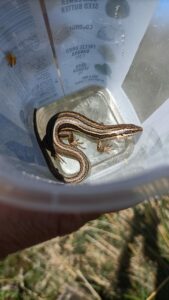
MOKO Species Report 005 – Mokomoko Skink (Oligosoma moco)
The Mokomoko skink is a species of skink endemic to New Zealand, found only in the central North Island. They are a small lizard, growing to an average length of 14 centimeters. Their skin coloration is a light to dark brown, with distinctive black stripes running down their back.
Mokomoko skinks are primarily found in native forest habitats, although they have also been known to inhabit shrublands and rocky outcrops. They are primarily diurnal and are active during the warmer months of the year.
These skinks are known for their unique defense mechanism, where they detach their tails when threatened by a predator. The detached tail wriggles around, distracting the predator while the skink makes its escape. The tail regenerates over time, but it may not grow back to its original length or color.
The Mokomoko skink is considered a nationally endangered species, with only a few populations remaining in the wild. The biggest threat to their survival is habitat loss and fragmentation due to land development, forestry, and agriculture. In addition, introduced predators such as rats, stoats, and feral cats pose a significant threat to the skinks, as they prey on both adults and juveniles.
Conservation efforts are underway to protect and restore the habitat of the Mokomoko skink, including predator control, habitat restoration, and captive breeding programs. These efforts have shown promising results, with some populations showing signs of recovery.
Let’s all do our part to help protect the Mokomoko skink and other threatened species in New Zealand.

